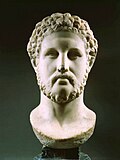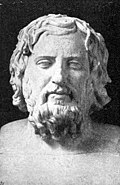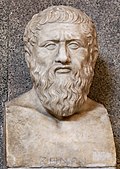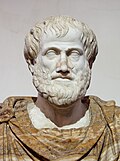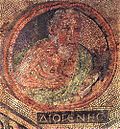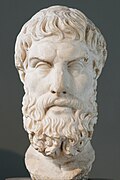| Millennia |
|---|
| 1st millennium BC |
| Centuries |
| Timelines |
| State leaders |
| Decades |
| Categories: |
| Births – Deaths Establishments – Disestablishments |

The 4th century BC started the first day of 400 BC and ended the last day of 301 BC. It is considered part of the Classical era, epoch, or historical period.
Contents
- The world in the 4th century BC
- Events
- 390s BC
- 380s BC
- 370s BC
- 360s BC
- 350s BC
- 340s BC
- 330s BC
- 320s BC
- 310s BC
- 300s BC
- Significant people
- Politics
- Military leaders
- Visual arts
- Literature
- Science and philosophy
- Health professionals
- Inventions, discoveries, introductions
- Sovereign states
- References
- External links
This century marked the height of Classical Greek civilization in all of its aspects. By the year 400 BC Greek philosophy, art, literature and architecture had spread far and wide, with the numerous independent Greek colonies that had sprung up throughout the lands of the eastern Mediterranean.
Arguably the most important series of political events in this period were the conquests of Alexander, bringing about the collapse of the once formidable Persian Empire and spreading Greek culture far into the east. Alexander dreamt of an east/west union, but when his short life ended in 323 BC, his vast empire was plunged into civil war as his generals each carved out their own separate kingdoms. Thus began the Hellenistic age, a period characterized by a more absolute approach to rule, with Greek kings taking on royal trappings and setting up hereditary successions. While a degree of democracy still existed in some of the remaining independent Greek cities, many scholars see this age as marking the end of classical Greece.
In India, the Maurya Empire was founded in 322 BC by Chandragupta Maurya who rapidly expanded his power westwards across central and western India, taking advantage of the disruptions of local powers in the wake of the withdrawal westward by the armies of Alexander.
China in the 4th century BC entered an era of constant warfare known as the Warring States period. The period saw the rapid rise of large states (such as Chu) over smaller ones thanks to technological advancement. Though the period has usually been characterized by historians as being excessively violent compared to the Spring and Autumn period, it was also punctuated by several cultural and social growths through the expansion of several different sects of Confucianism and Taoism, and the formulation of Legalist thought.



